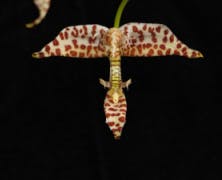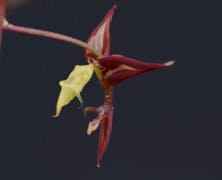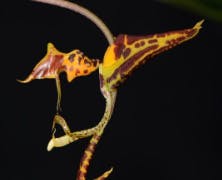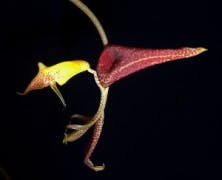LIGHT
Light requirements vary. Most species require light conditions at 21,500-43,000 lumens (2,000 to 4,000 foot-candles). More light should be provided during dormancy, as in nature, the plants become more exposed to direct sun.







Light requirements vary. Most species require light conditions at 21,500-43,000 lumens (2,000 to 4,000 foot-candles). More light should be provided during dormancy, as in nature, the plants become more exposed to direct sun.
Temperature for the evergreen species should be fairly constant and not be hot. Nights of 60F (16C) and days of 70F to 80F (21C-27C) are desirable. Deciduous species can tolerate a wider range, up to 95F (35C) during the day and down to 50F (10C) at night when dormant in winter. If keeping plants cool, also keep them drier to prevent rot.
When thinking about these plants’ water needs, think about the environments that they come from – mostly seasonally wet savannah or equatorial. That means that these plants should not dry out during active growth. If insufficient water is given, or there is too much time between waterings, the plants will exhibit “accordion” growth. Regardless of whether it is growing indoors or in a greenhouse, water should be liberally applied (though we do not recommend these plants for indoor growing). Potting mix should be perpetually moist and dry slightly between waterings. Plants should not dry out completely, or if they do, water needs to be immediately applied when the media hits dryness. Deciduous species should be allowed to hit dryness during dormancy, but still watered as soon as they dry out. Water should be kept off the leaves and especially out of the new growths to prevent rot or leaf spotting, which disfigure otherwise handsome plants.
Humidity should be maintained at 40% to 80%. Deciduous species need less humidity when dormant. Brisk air circulation will help prevent damage to leaves by leafspot fungi.
Fertilize regularly and heavily when plants are actively growing. A higher nitrogen formulation (such as 30-10-10) is recommended during active growth. In autumn, or as growths mature and pseudobulbs are produced, fertilizer should be reduced or switched to a high-phosphorus (such as 10-30-20) formulation to stimulate flower production.
Potting is best when new growth starts, usually in the spring. A fine-grade potting medium is often used; fir bark and perlite (3:1) is a common, fast-draining mix, though some species are planted in 100% sphagnum. If planting in sphagnum, the pot should be a netted pot. If using the bark mix, the pot should be plastic. Always pot these orchids in hanging baskets, as some species flower downwards. When repotting, split plants into no less than two pseudobulbs per pot and choose a container to allow for two years of growth. The plant should be positioned in the vessel so that the newest growths are farthest away from the edge of the pot, allowing the maximum number of new growths without crowding the pot. Spread the roots over a cone of potting medium and fill in around the roots and the pseudobulbs. Push the medium firmly around the roots and water after repotting. Keep the humidity high and the potting medium on the semi-dry side until new roots form.
Further information can be found on the Gongora genus page.
Best orchid care practices are also provided for watering, repotting, and fertilizer types. There are also detailed discussions of growing orchids indoors, outdoors, or in greenhouses.
For more information on genus name changes, see Taxonomy.

Get notified when orchid vendors have special promotions and exclusive savings.
